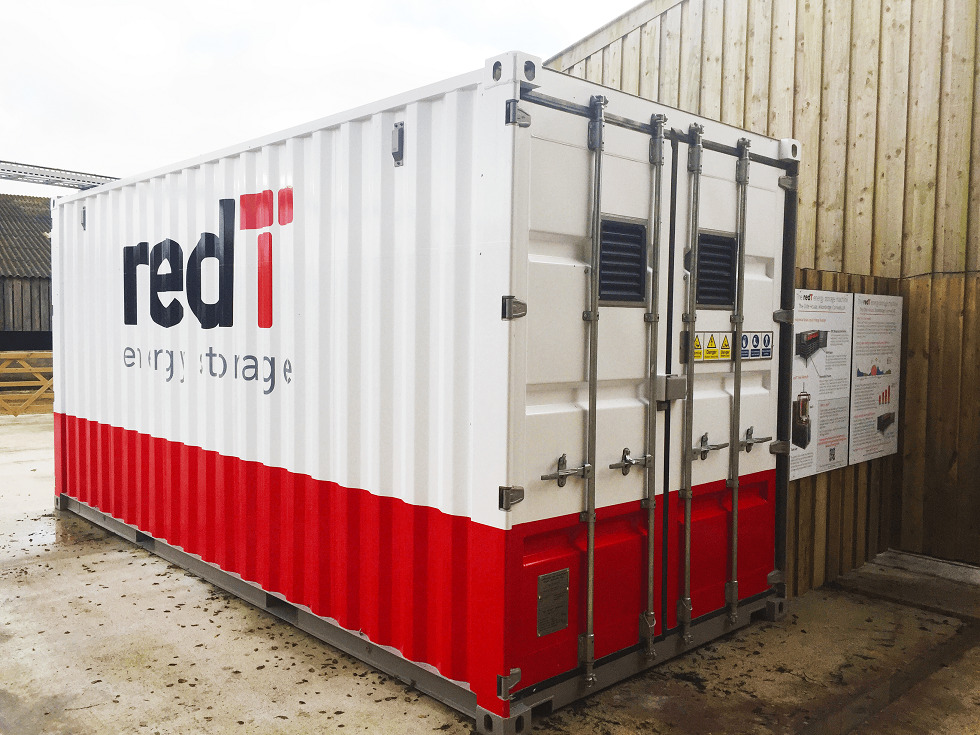
What is thought to be the largest operating containerised vanadium redox flow machine system in the UK has been connected to the to the grid by redT energy, with the 1MWh project expected to cut a Cornish business’ reliance on grid imports in half by time shifting excess solar generation.
The system from redT energy has been installed at The Olde House, a 600 acre working farm and holiday retreat situated in north Cornwall, which also has two small solar arrays with a combined capacity of 350kWp.
The project will shift the excess generation from these installations to use during evening peak times around the site, which is expected to save The Olde House up to 50% on grid imports during these periods.
It will also create revenue by tracking and dynamically responding to changes in grid frequency and providing grid services, while also aiming to participate in the Capacity Market.
RedT expects this type of project to achieve an internal rate of return (IRR) percentage in the mid-teens.
Scott McGregor, chief executive of the company, redT energy said: “We are delighted to announce that our flagship energy storage project in the UK is now fully operational. This remains one of the only commercial energy storage projects of its kind in the UK as a fully flexible energy storage platform, demonstrating the company’s industry leading position in the sector.
“Through ‘firming’ onsite solar generation, this system will generate significant savings for The Olde House, by enabling the owners to greatly reduce the need to import electricity from the grid. The machines will also engage revenue producing grid services and energy trading opportunities with the help of Centrica and the LEM.”
The Local Energy Market (LEM) is a £19 million trial project being carried out by Centrica to demonstrate the role that flexible generation and storage can play in relieving pressure on the grid and driving down energy prices in the UK.
The project, announced in December 2016, will use connect homes and businesses in the region with local renewable generators via an online virtual market place, allowing them to sell energy capacity to both the grid and the wholesale energy market at times of increased or decreased demand.
In an update in February, Centrica said it was aiming to bring around 60 local businesses into the trial using a funding pot of £6 million for participants.
The company gave financial backing to the redT project and will take over control of the system in due course. Centrica will then operate the asset remotely, engaging in energy trading and arbitrage of behalf of The Olde House to generate revenue.
Matt Hastings, programme director of the Cornwall LEM trial at Centrica, said: “Energy storage will play a fundamental part in the programme, providing the local network operator with a tool to help stabilise the system, relieving constrained parts of the network, and giving homes and businesses the ability to store their own energy.”
“We are very fortunate to be working with Centrica and The Olde House on this flagship UK energy project, which proves flow machines as a commercially attractive, viable solution and flexible platform for the UK’s energy future,” McGregor added.

